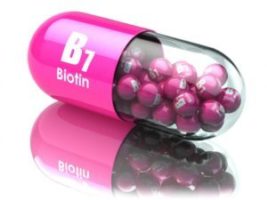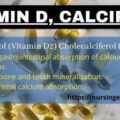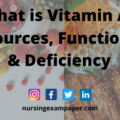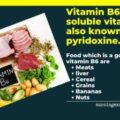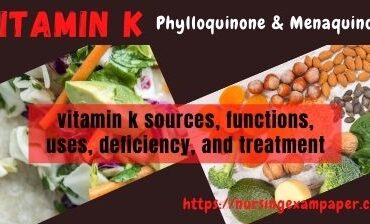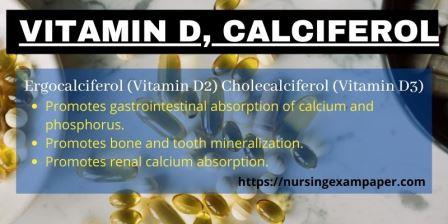Vitamin B1 is one of the 8 vitamins from the B Family. It is also called Thiamine, Thiamine found in food and also manufactured as a dietary supplement and medication. Food sources of thiamine are whole grains, meats, and fish. 90% of Thiamine circulates as TPP (Thiamine pyrophosphate). Thiamine store in skeletal muscles. Thiamine helps the body to convert food into energy, and maintain the cardiac system, brain, and nerve system healthy.
What is Source of VItamin B1 / Thiamine ?
Source of VItamin B1- Animal Source and Plant Source.
Food sources of thiamine include liver, beef, dried milk, oats, nuts, oranges, pork, egg, seeds, legumes, peas, and yeast. Rice is a source of thiamine. Foods are also fortified with thiamine like rice, pasta, pieces of bread, and flour.
The Cell Structure, Functions, Parts, and Characteristics
What is the Characteristics of thiamine?
Characteristics of thiamine-
Thiamine is a water-soluble vitamin, It enables the body to use carbohydrates as energy. It is essential for glucose metabolism, and it plays an important role in nerve, muscle, and heart function. Vitamin B1 absorbed mostly in the jejunum and ileum of the small intestine. It absorbs by an active transport mechanism.
What is the Function of Thiamine / Vitamin B1?
The function of thiamine-
Vitamin B1 plays an important role in metabolism TPP (thiamine pyrophosphate) is essential for oxidation of pyruvate (pyruvic acid) into acetyl COA which is starting production of the Krebs cycle. Thiamine helps maintain the nerve in a healthy condition by helping the formation of the myelin sheath. Thiamine is important for nerve transmission of the nerve impulse because it requires the synthesis of neurotransmitters such as Acetylcholine and serotonin.
Thiamine Deficiency disease-
What is Vitamin A – Sources, Function & Deficiency
Beri-Beri – it’s classified into three types
- Infantile Beri-Beri
- Develop within the first six months.
- lack of thiamine in breast milk. rapid onset.
- Tachycardia.
- Labored breath.
- Depression.
- Cyanosis.
- Heart failure.
- Death.
- Wet Beri-Beri (developed due to a lack of Vitamin B1.)
- Symptoms like congestive heart failure.
- Labored breath.
- Pitting edema.
- Fatal circulatory collapse.
- Depression.
- Rapidly respond to B1 Supplements.
- Dry Beri-Beri.
- No edema
- Loss of appetite.
- Fatigue
- Numbness, muscle weakness.
- Chronic infection.
- Depression.
Vitamin C Functions, best source, And Deficiency
Wernicke korsakoff Syndrome – (WKS) is a type of brain disorder caused by a lack of vitamin B1, or thiamine.
Other deficiency symptoms are fatigue, loss of appetite, irritability, reduced reflexes, tingling sensation in arms and legs, muscle weakness, blurry vision, nausea, and vomiting, changes in heart rate, shortness of breath, and delirium, etc.
Sources and Additional Information:

